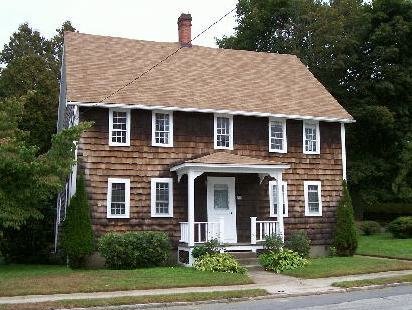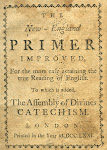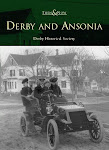Last weekend, I finally got around to assembling a writing table I had purchased a few weeks earlier from
Home Decorators Collection. They call it a
multi-use writing table. It's part of my ongoing effort to set an informal study up in the old spinning room. In fact, I've decided to make all three back rooms of the second floor into special-purpose work rooms: The southeast bed chamber as a
computer room, the spinning room as a cozy refuge for reading and writing, and the northeast bed chamber as a small workshop for second-floor restoration and preservation work. Longer term, the northeast chamber eventually might be fashioned into a second floor bath, but there are far more pressing things to accomplish right now; hence, the second floor workshop.

 All the wooden parts comprising the writing table; assembled trestle and drawers
All the wooden parts comprising the writing table; assembled trestle and drawersWhen it comes to furniture for the house, colonial, shaker, and some country styles, generally work best. On the other hand, some modern pieces that are relatively simplistic, comprised of darkly finished wood, and are generally reminiscent of earlier times, also seem to fit well with the overall tone of the house -- sometimes even better than actual vintage furniture. And while I prefer to acquire vintage furniture, I sometimes find it difficult to obtain what I am looking for in used pieces. The multi-purpose writing table, on the other hand, is
precisely what I wanted for the spinning room study. I think I would've been hard-pressed to find anything quite like it second-hand.

 Spinner and ratchet screw driver; joining the table top and frame
Spinner and ratchet screw driver; joining the table top and frameThe table arrived completely disassembled, but wasn't all that difficult to join together, in large part because it fastens with simple knock-down screws and connectors. For most joints, a wooden dowel is also inserted parallel to the connector to prevent movement in the assembled joint, as well as to provide the correct spatial orientation between the two parts. The only tools required are a 4mm allen head wrench (one came with the table, but I prefer to use an allen head socket with a spinner), and a #2 philips head screw driver (I like to use my ratchet screw driver on these kinds of jobs nearly all the time).

 Remaining table-top hardware installed; the completed writing table
Remaining table-top hardware installed; the completed writing tableFive pieces of hardware fasten the table top to the main frame assembly: Three small hinges that attach along the edges of the top and frame, two larger spring loaded hinges that faciliate the angling of the table top over the frame, and a big ratchet-style arm that supports the table top when angled. I found it easiest to add this hardware with the table top upside-down on horses and the attached frame rigidly supported; in this case, I simple butted it against the wall.

 Table and stool; top positioned at a comfortable angle for drafting
Table and stool; top positioned at a comfortable angle for draftingOnce the top and frame are joined, the frame supports are simply inserted into the trestle legs, and two wooden pins are used to hold the frame at the desired height. The top can rest flat for reading or writing, or can be angled for drawing or drafting. Three capped inserts keep things from rolling off. For now, I've positioned the table against the partition on the south side of the room (more or less as shown in the last photo above). This enables natural light entering the window to illuminate the table top at a slight angle from just behind one's left shoulder. It also addresses the problem of what to do with that relatively empty wall space.


























